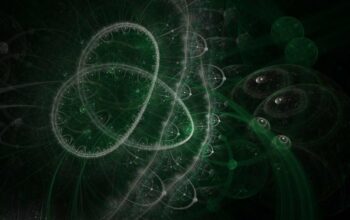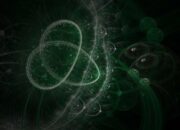Magnetism, often relegated to the domain of everyday experience, reveals a fascinating tapestry of interactions that interlace classical and quantum physics. This article endeavors to unravel the complex nature of magnetism and scrutinize its quantum underpinnings, challenging the preconceived notions that often accompany this enigmatic force.
Historically, magnetism emerged as a classical phenomenon, observable in magnets and certain ferromagnetic materials. However, as scientific inquiry progressed, it became increasingly evident that classical explanations were insufficient to account for myriad magnetic behaviors at the microscopic level. Thus begins the voyage into the quantum realm, where concepts of magnetism undergo profound reinterpretation.
The primary catalyst for embracing magnetism as a quantum phenomenon resides in the behavior of electrons. These subatomic particles possess intrinsic properties known as spin, which is a fundamental characteristic analogous to angular momentum. Spin gives rise to magnetic moments, as each electron behaves like a tiny magnet. When electrons align their spins in the same direction, they collectively generate a magnetic field. This alignment is pivotal to understanding not only ferromagnetism but also antiferromagnetism and ferrimagnetism, phenomena that defy classical explanations.
The classical view of magnetism can be likened to compass needles aligning with Earth’s magnetic field. However, quantum mechanics introduces a more nuanced understanding. The Heisenberg Uncertainty Principle posits limits on the precision with which pairs of physical properties, such as position and momentum, can be simultaneously known. Consequently, the electron spins in a material are subject to a level of indeterminacy that can lead to collective behaviors otherwise dismissed by classical physics.
Furthermore, quantum mechanics elucidates the role of exchange interactions between electrons. This phenomenon arises from the principles of quantum superposition, where particles can exist in multiple states simultaneously. As electrons occupy the vicinity of one another, their spins can become entangled, resulting in a drastic shift in energies that favor certain configurations over others. This exchange energy is the crux of ferromagnetism; it incentivizes parallel alignment of spins, culminating in a macroscopic magnetic field.
The interrogation of magnetism does not stop at the ferromagnetic state. Researchers have unveiled a spectrum of magnetic behaviors dictated by quantum mechanics, notably in materials exhibiting quantum fluctuations. In a zero-temperature limit, systems such as spin liquids exhibit magnetic behaviors not captured by classical models, where spins remain disordered even at absolute zero due to quantum effects. This introduces a facet of magnetism that bridges disciplines, inviting inquiries from condensed matter physics to material science.
Consider the phenomenon of superconductivity, where electron pairs, known as Cooper pairs, exhibit coherence and flow without resistance. At the surface of superconducting materials, the interaction of paired electrons gives rise to a magnetic field expulsion phenomenon termed the Meissner effect. Such insights reinforce the assertion that magnetism, specifically in superconductors, is inherently quantum in nature, interlacing forces at macroscopic scales with quantum effects governing subatomic particles.
Venturing further, one encounters the exotic realms of topological magnetism. Here, the interplay of topology, a branch of mathematics, with magnetic order raises compelling questions about the nature of magnetic monopoles and skyrmions—localized magnetic configurations that retain stability due to their topological characteristics. Such structures pave the way for future technological integration in spintronics and quantum computing, where the quantum states of magnetism may usher in new paradigms in information processing.
Magnetic resonance imaging (MRI) technology exemplifies the practical manifestations of quantum magnetism applications. It leverages the magnetic properties of nuclei in the presence of an external magnetic field, influenced by quantum states. The understanding of quantum angular momentum and spin transitions permits high-resolution imaging, laying bare the intricacies of biological tissues and aiding in medical diagnostics.
In navigating the quagmire of magnetism as a quantum phenomenon, it becomes apparent that one must fuse classical concepts with quantum realities. The confluence of these realms not only enhances scientific comprehension but also spawns novel applications across diverse fields. The promise of quantum magnetism stands at the frontier of future technologies, with potential advancements in energy storage, magnetic sensors, and quantum computing at the helm of this transition.
Yet, the journey does not end here. Current research continues to explore and expand our understanding of magnetism through quantum channels. Challenges remain in unraveling the interactions in complex materials, while questions linger about unifying disparate magnetic behaviors under a comprehensive framework. The pursuit of these answers transcends mere academic curiosity; it has the potential to catalyze revolutionary shifts in technology and scientific understanding.
In summary, magnetism is not merely a classical phenomenon; it is intrinsically intertwined with quantum mechanics. This paradigm shift necessitates a reevaluation of our understanding of magnetic interactions, inviting not only physicists but also scientists across various disciplines to engage with this beguiling area of research. The intricate dance of electrons and their magnetic properties continues to inspire inquiry and innovation, reflecting the multifaceted nature of our physical universe.






